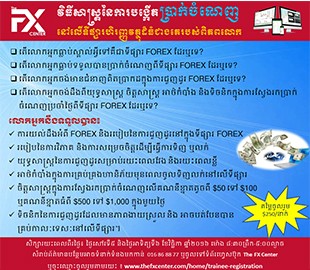Factors that Move FOREX Market
There are essentially five factors which cause the Forex Market to move:
- Economic data
- Central bank intervention
- Natural disasters
- Speculation
- Political factors
Let’s explore them in detail.
1. Economic Data
Countries release important economic data almost on a daily basis. Some data are more closely watched than others. Suffice to say, markets tend to move a lot during the news announcements, especially when the actual data does not coincide with economists’ expectations. Let’s take a look at the top 10 news announcements that tend to cause the biggest movements in the Forex Market:
- Interest Rates
Central banks usually raise or lower interest rates to achieve a particular inflation target. If the current inflation is below their target, the bank may cut the rate to entice consumers to spend more (given the cheaper borrowing rate), thus increasing the demand for goods and services.
- Central Bank Minutes
The central bank is the entity, which is responsible for implementing monetary policies for a nation (or in the case of the European Central Bank, a group of nations).
These policies include but are not limited to currency stability, stable inflation and full employment. Central banks also generally issue currency, function as the bank of the government, regulate the credit system, oversee commercial banks, manage exchange reserves and act as a lender of last resort.
These policies include but are not limited to currency stability, stable inflation and full employment.
- Fed (The U.S Federal Reserve System)
- ECB (European Central Bank)
- BoE (Bank of England)
- RBA (Reserve Bank of Australia)
- BoJ (Bank of Japan)
- SNB (Swiss National Bank)
- BoC (Bank of Canada)
- RBNZ (Reserve Bank of New Zealand)
- Employment
This is another piece of data that is highly sought after by retail traders. In the US, this news is termed the “Non-Farm Payrolls” (NFP) and it accounts for about 80 percent of the workers who contribute to the Gross Domestic Product (GDP). The NFP is released on the first Friday of every month, and is arguably the most traded piece of news worldwide.
The NFP report is a statistical data of the US Bureau of Labour Statistics. It is intended to represent the total number of paid US workers of any business, excluding the following:
- General government employees
- Private household employees
- Employees of non-profit organizations that provide assistance to Individuals
- Retail Sales
Retail sales is an aggregated measure of the sales of retail goods over a stated time period, typically based on a data sampling that is extrapolated to model an entire country. In the US, the retail sales report is a monthly economic indicator that is compiled and released by the Census Bureau and the Department of Commerce.
- ISM/MPI Reports
In the US, the Institute for Supply Management (ISM) is responsible for maintaining the Purchasing Managers Index (PMI), which is an indicator of the economic health of the manufacturing sector.
The PMI index is based on five major indicators, which are extracted through surveys to more than 400 purchasing manager from around the country.
- Productions level (0.25)
- New orders from customers (0.30)
- Supplier deliveries (0.15)
- Inventories (0.10)
- Employment level (0.20)
Business and Consumer Confident
- Business Confident: The Business Confidence Index is an indicator designed to measure the degree of optimism on the state of the economy that business owners are expressing through their activities of investing and spending.
- Consumer Confident: Consumer confidence is an indicator designed to measure the degree of optimism that consumers feel about the overall state of the economy and their personal financial situation.
- Housing Data: In the US, The New Residential Construction Report is a monthly report issued by the US Census Bureau jointly with the US Department of Housing and Urban Development (HUD).
- Inflation: Inflation is the rate at which the general level of prices for goods and services is rising, causing purchasing power to fall.
- GDP: Gross Domestic Product is the monetary value of all the finished goods and services produced within a country’s borders in a specific time period. It includes all private and public consumption, government outlays, investments and exports less imports that occur within a defined territory.
- Trade Balance: Trade Balance is a measure of the ratio of exports to imports for a given country’s economy.
- If exports are higher than imports (a trade surplus), the trade balance will be positive, causing the currency to strengthen.
- If imports are higher than exports (a trade deficit), the trade balance will be negative, causing the currency to weaken.
- Trade Balance = Exports – Imports
Trade balance is derived primarily from three factors:
- The price of goods in a country
- Tax and tariff levies on imported or exported goods
- The exchange rate between two currencies
2. Central Bank Intervention
Central Bank Intervention usually happens when a nation’s currency is undergoing excessive downward or upward pressure from market players – usually speculators.
There are four types of Bank Intervention:
- Verbal Intervention
- Operational Intervention
- Concerted Intervention
- Sterilized Intervention
3. Natural Disasters
Natural disasters can impact the currency market substantially. Here’s a list of the top 10 natural disasters:
- Landslide
- Avalanche
- Drought
- Wildfire
- Flood
- Tsunami
- Volcanic eruption
- Tornado
- Earthquake
- Hurricane/typhoon
4. Speculation
In Forex, speculation involves the buying and selling of currencies by anticipating profits from market fluctuations.
- There are no guarantees on the security of the initial investment as well as the return on investment (ROI).
- To put it simply, any risk-taker could be a speculator.
- Speculators trade the Forex market purely for profit.
There are two categories of speculators in the market:
- Retail traders
- Hedge funds
5. Political Factors
This can include wars and even elections. Inmost cases, the currency tends to fall in times of political turmoil as traders sell off and move their assets to a more stable environment. In times of political turmoil, money rushes to safe haven assets such as the US dollar, Japanese yen, Swiss franc and gold, causing their prices to rise.
How to Trade in FOREX Market
There are two types of market BULL and BEAR. The terms bull and bear created by traders in the global financial market. The term bull was derived from the way in which bulls’ attack or charge, moving upward or pushes the price going up. In contrast, bears move downward when they attack or push price going down.
- Bulls, therefore, resemble a buying market, because they believe prices will continue to move upward, or rise, whereas bears resemble a selling market, because they believe prices are going move downward, or fall. Every trader has to make a decision to be either a bull or a bear before entering the market. Bulls enter the market buying (first) and exit selling (second).
- Bears do the opposite: they enter selling (first) and exit buying (second). To make a profit in the market, you must always buy low and sell high. Both bulls and bears are trying to do that; bears just reverse the transactions.























